1. SpaceX Is The Future of Space Travel
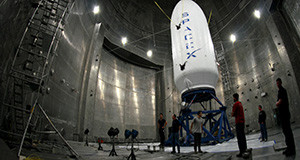
If you don’t know about SpaceX yet, here’s an overview of the most innovative company in the galaxy. SpaceX, or Space Exploration Technologies Corporation, is a project started by entrepreneur/scientist Elon Musk.
Founded in 2002, the goal was to create a company that could lower the cost of space travel and eventually re-boot a Mars colonization plan. This is the first serious talk in years to get people to the red planet. SpaceX is the only private company to be doing anything like this. It’s bringing public interest back to the Mars project and fueling research in public space programs, such as NASA. It’s basically every space nerd’s dream coming to fruition.
2. The Founder/CEO, Elon Musk, Is Not Your Average CEO
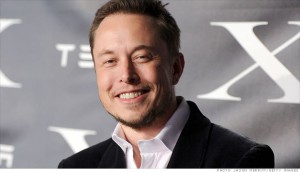
SpaceX is not Musk’s first project. He began his career starting a web software company, Zip2, with his brother in 1995. After selling to Compaq, Musk co-founded an internet financial services company, X.com.
This merged with Confinity, and became Paypal, making him the co-founder of the web’s leading payment service. By then, Musk had enough capital to pretty much do anything he wanted.
What did he do? He founded SpaceX.
Then, in 2004, Musk joined with Martin Eberhard and Marc Tarpenning to found Tesla Motors. Musk is the current CEO and product architect of Tesla. He’s clearly been at the forefront of technology for decades and he has been simultaneously running the most innovative companies in both the auto industry and the aeronautics industry. What’s next?
3. SpaceX’s Technology Is Revolutionary
SpaceX’s launch vehicles, the Falcon 1 and Falcon 9, were both designed to be reusable. The Falcon 1 was more of a test booster as it could only carry several hundred kilos into low earth orbit. The heavier Falcon 9 was developed after.
“ The Falcon 9 can carry over 10,000 kilos ”
According to SpaceX, the Falcon 9 can carry over 10,000 kilos. There is also a larger Falcon in development, the Falcon Heavy. It uses three Falcon 9 first stage cores to carry a heavier payload to orbit.
They have designed a spacecraft, Dragon, specifically for launch on the Falcon 9. The Dragon is intended to hold up to seven astronauts. It will be the first commercial spacecraft to bring humans to space!
Musk admits the name Falcon is in reference to everyone’s favorite starship, the Millennium Falcon. I had guessed Dragon might be an ode to Ender’s Dragon Army in Orson Scott Card’s science fiction masterpiece, Ender’s Game. Alas, I was wrong, according to Musk, Dragon was named after Puff the Magic Dragon.
4. SpaceX Is Making Groundbreaking Records
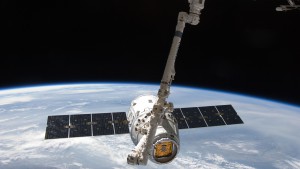
The Falcon 1 launched on September 28, 2008, making it the first privately funded rocket to reach orbit. This was a huge step in space technology innovation.
Space programs, such as NASA, have always been held back by government bureaucracy. If we can have a private company at the forefront of space technology, there are no limits to where it will go next.
On May 25, 2012, Dragon made its first delivery to the International Space Station. This is a first for a commercial spacecraft. Since then, it’s made two additional deliveries to the space station. If SpaceX can continue its rapid and successful development, we may see humans on Mars before we ever thought possible.
5. They’re Building Their Own Launch Pad
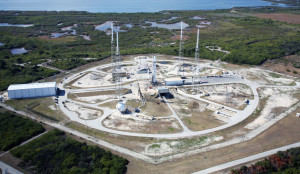
Construction started in 2014 at the new SpaceX spaceport located in south Texas. Having their own launch pad gives SpaceX the freedom they need to be more innovative and independent.
They can design and expand for any projects that come up, including Mars launches. In the past, they have used several government launch locations.
SpaceX works closely with NASA, which has assisted with launch plans. While this has certainly helped them innovate, having a launch pad of their own will no doubt allow them to expand their operations without limits.
6. SpaceX Is Designing Reusable Launch Systems
Since 2013, SpaceX has been doing extensive testing of their reusable launch systems. At the Singapore Satellite Industry Forum, COO Gwynne Shotwell claimed that launches could cost between five and seven million dollars once they optimize their reusable systems.
“ Launches could cost between 5 and 7 million dollars ”
To give you some perspective, United Launch Alliance, a competitor, claims it charges an average of $225 million per launch. Not only do reusable launch systems reduce costs, but also they produce less waste. What else would you expect from the CEO of Tesla Motors?
Who knows, maybe SpaceX will find a way to run a rocket off of renewable energy. You might laugh now, but imagine what Henry Ford would have said if he was told an automobile engine could run off electricity.
The key feature of reusable launch systems is the ability to land it. So far, they haven’t been successful on a barge landing. But this month, SpaceX announced they will be attempting a land landing next launch, according to an article in Florida Today. A successful landing would be a huge step in reusable technology. Let’s keep our fingers crossed!
7. They’re Changing The Game for The Space Launch Market
One of Musk’s primary goals in launching SpaceX was lowering the cost of space programs. They’ve managed to reduce the cost of building a rocket substantially. As it turns out, the cost of raw materials is only about 3% of the average price of a rocket.
Musk, being the savvy businessman he is, thought there was a very simple solution to this problem; a solution that businesses in other industries have been doing for decades: vertical integration. By building rockets mostly in-house, SpaceX is able to produce them at a fraction of the cost of buying them elsewhere.
SpaceX has also reduced launch prices drastically, putting pressure on competitors to do the same. According to an article by Air and Space Magazine, the Falcon 9 launches cost less than $2500 per pound and the Falcon Heavy launches cost around $1000 per pound. The fact that the rockets are reusable should bring prices down even further in the future.
Starting at the end of 2013, SpaceX launched its first satellite into orbit. Entering the commercial satellite market with pricing much lower than competitors, SpaceX could monopolize this market. Although this may not seem like it’s taking us a step closer to getting humans on Mars, it could bring in billions in revenue that could be put into research and development.
8. SpaceX May Have Just Landed a Major Government Contract
According to a recent report from the Washington Post, the United Launch Alliance will not be bidding on a new pentagon contract.
SpaceX is the only other company with the capabilities of fulfilling this contract. This could lead to many more future government contracts and billions of dollars of revenue. Slowly but surely, SpaceX is making it’s way into every sector of the space business.
9. They Will Be Prepared for Human Flight by 2017
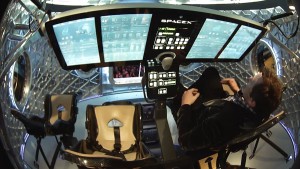
Since the beginning of SpaceX, the goal has been for human flight. It has been over a decade of research and development but they are almost ready. In May of this year, SpaceX announced Crew Dragon successfully completed their first Pad Abort Test.
This test simulated emergency procedures to safely evacuate astronauts in the event of a problem launching. It involved sending dummies wired with sensors (and parachutes) to capture all the necessary information and ejecting them at the appropriate time.
As mentioned before, the test was a success, with the dummies landing safely in the water. SpaceX claims they will use this data for future testing before sending actual people to space. If they plan to launch a human flight within the next two years, they must feel pretty confident about their current data.
10. SpaceX Can Satisfy Our dream to Get Humans to Mars
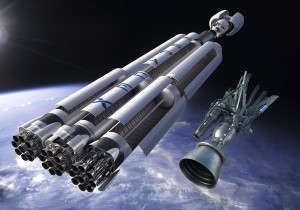
Okay, so SpaceX may be getting close to sending humans to space, but how close are they to getting us to Mars? At this time, NASA and SpaceX are planning a Mars mission using the Falcon Heavy to search for life on Mars. If successful, it could bring us one step further to getting a person on Martian soil.
So how many years do we have to wait?
Development of the engine to get to Mars began a couple years ago, but it’s estimated that the vehicle, the Mars Colonial Transporter, won’t be ready for some time. There are estimates around the mid-2020s but who knows. There’s still much more to be done. And once the engine and MCT are ready, there will surely be years of tests before we can confidently send astronauts to the red planet.
So will we see a person on Mars in the next ten years?
Probably not, but I’m betting we will before Elon Musk retires.
Andy Weir’s The Martian, arguably the most popular science fiction book at the moment may not be science fiction for much longer.
